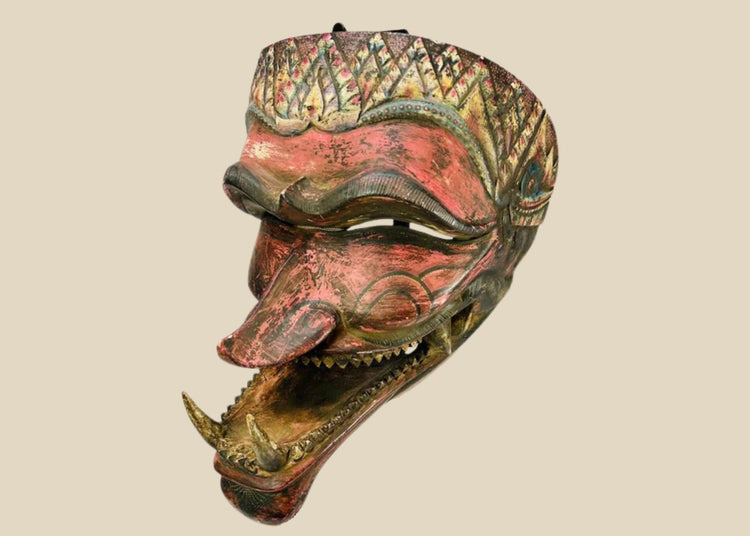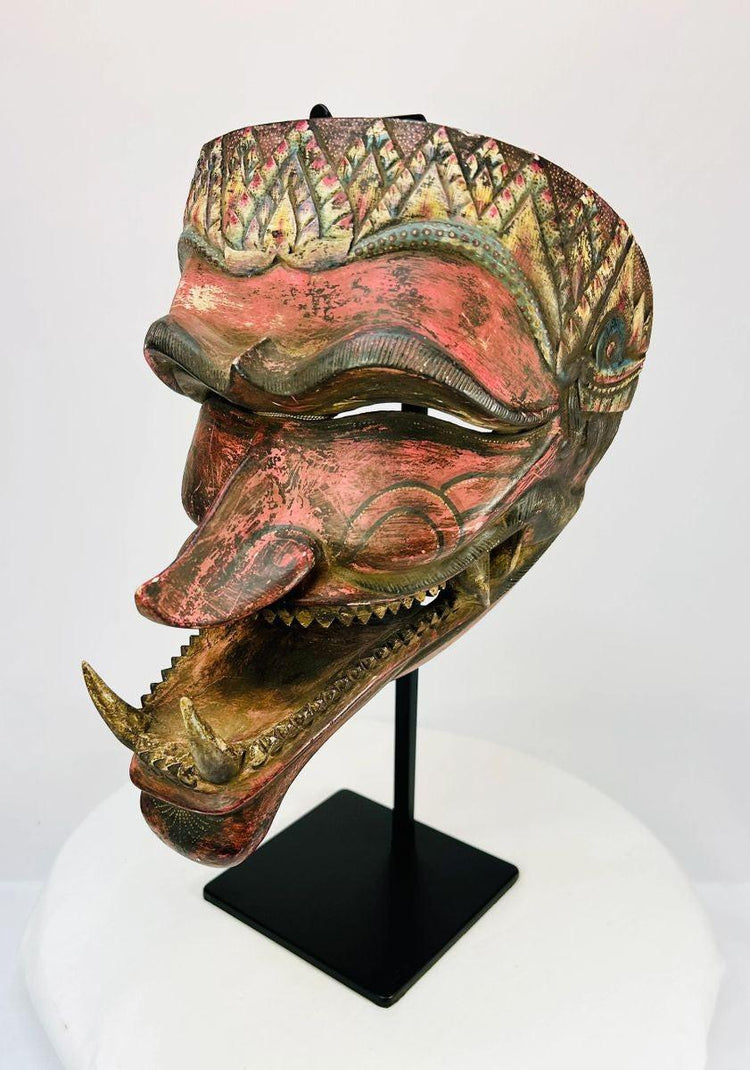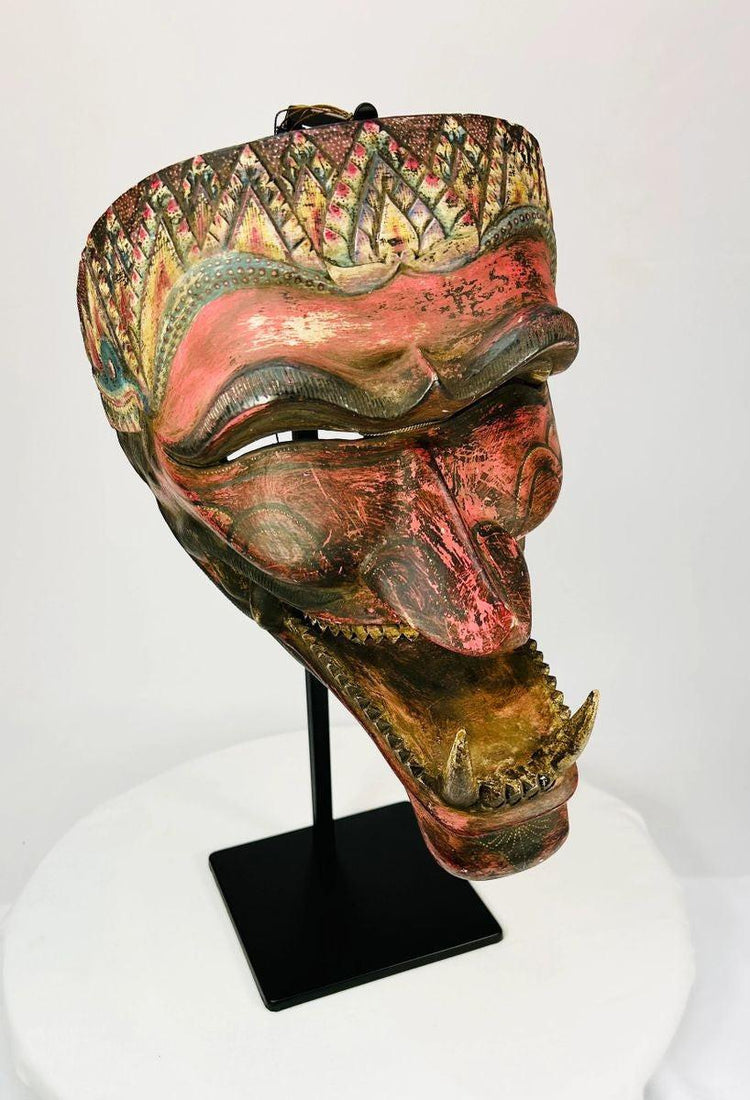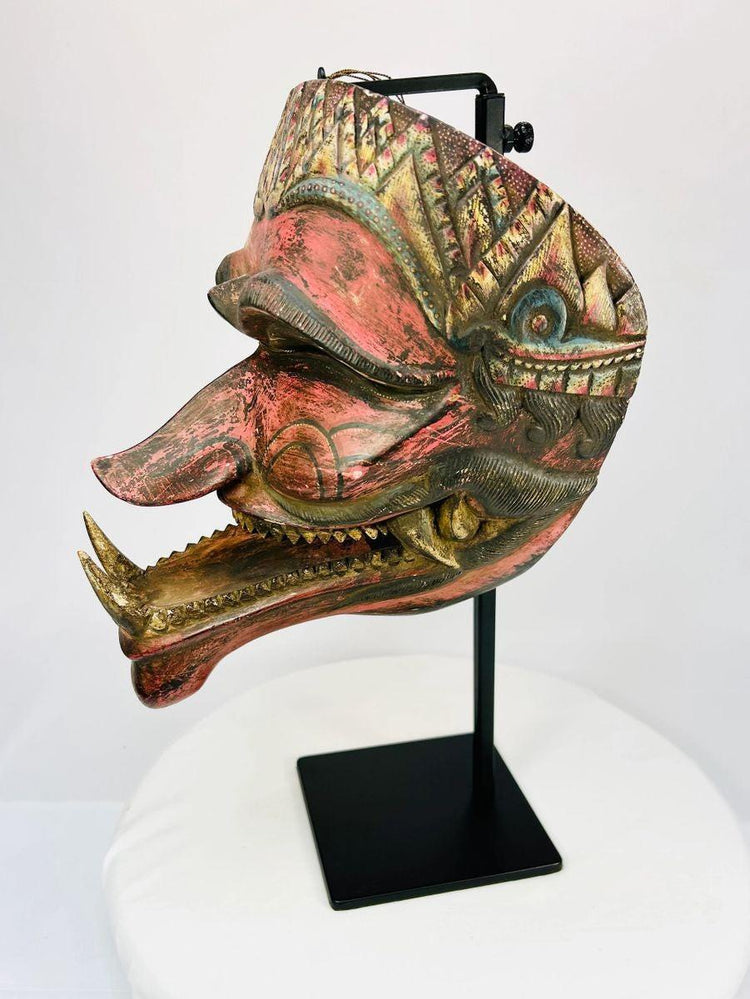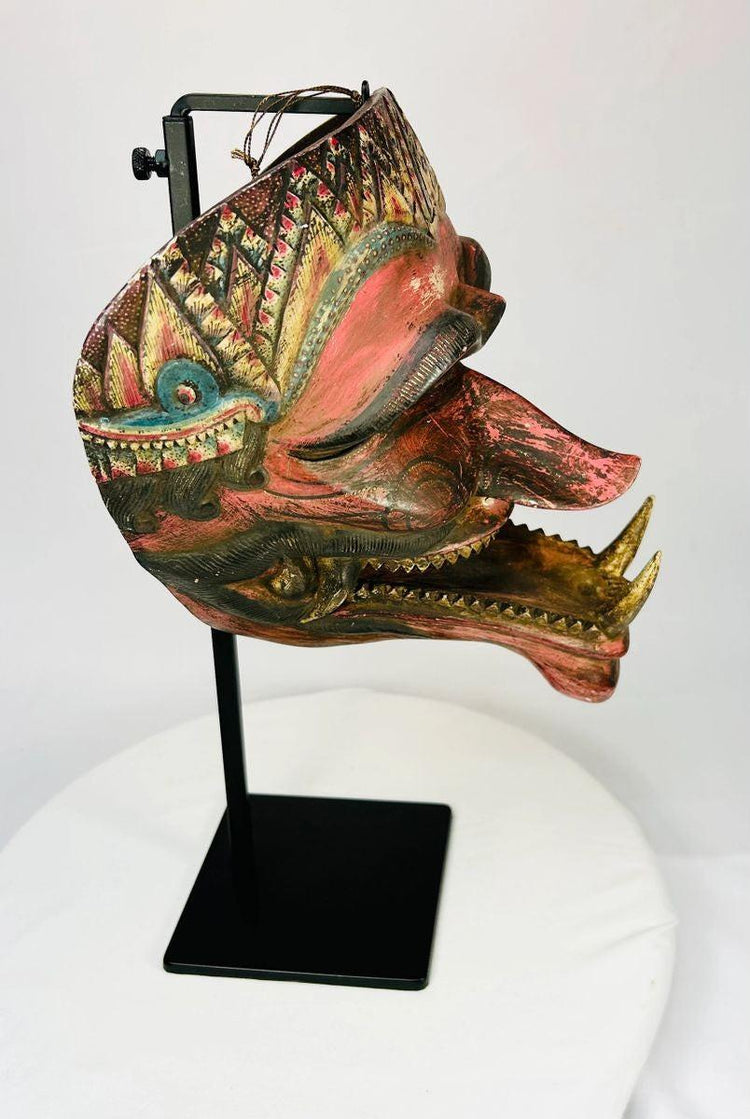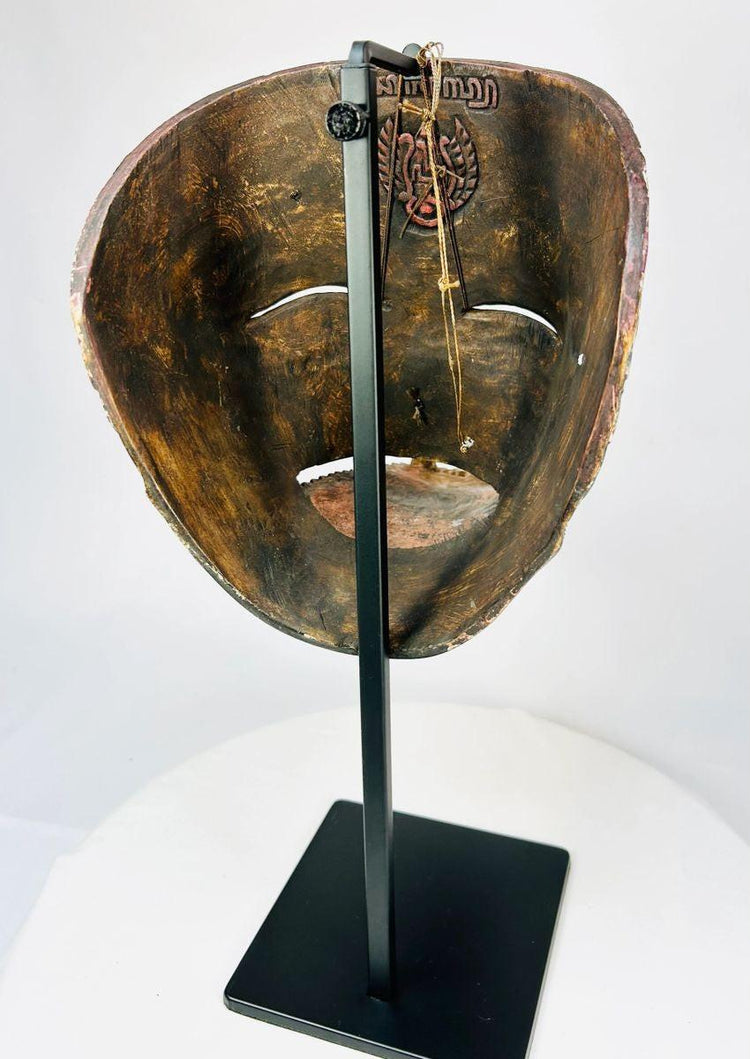Javanese | Carved Wooden Cakil Mask | Late 19th Century
Description
More
Less
Historical Context & Origin
Region: Java, Indonesia
Material: Hand-carved wood with polychrome paint
Period: Late 19th Century CE
Description
This remarkable Javanese carved wooden Cakil mask is a striking ceremonial and theatrical artifact, used in Wayang Kulit (shadow puppet theater). The character of Cakil, a well-known demon in Javanese tradition, is portrayed with exaggerated features that embody greed and menace. This mask captures his role as an adversary in the eternal battle between good and evil, central to Javanese cultural storytelling.
Features
- Sharp teeth, curved nose, and dramatic expressions symbolizing demonic ferocity
- Crown-like decoration enhancing its theatrical presence
- Hand-carved wood with polychrome decoration in crab red, gold, and black
- Weathered patina reflecting both use and age, attesting to its authenticity
Cultural Significance
In Javanese Wayang Kulit performances, Cakil is a central antagonist character, representing chaos, greed, and demonic energy. Masks like this were used in dance-drama and ceremonial contexts, serving as vivid visual embodiments of mythological battles. Beyond performance, such masks symbolized the spiritual and moral lessons embedded in traditional storytelling, reinforcing the cultural values of balance and harmony.
Condition
The mask is well-preserved with vibrant traces of its original pigments. Signs of wear and patina consistent with age further authenticate its use in ceremonial or theatrical contexts.
Dimensions (approximate)
Height: 10 in
Width: 8.5 in
Depth: 7.5 in
Age
Late 19th Century CE
Learn More
Explore Our Other Historically Significant Masks
See a Similar Artifact From: Second Face - Museum of Cultural Masks
Read More About Masks From Indonesia
Description
Historical Context & Origin
Region: Java, Indonesia
Material: Hand-carved wood with polychrome paint
Period: Late 19th Century CE
Description
This remarkable Javanese carved wooden Cakil mask is a striking ceremonial and theatrical artifact, used in Wayang Kulit (shadow puppet theater). The character of Cakil, a well-known demon in Javanese tradition, is portrayed with exaggerated features that embody greed and menace. This mask captures his role as an adversary in the eternal battle between good and evil, central to Javanese cultural storytelling.
Features
- Sharp teeth, curved nose, and dramatic expressions symbolizing demonic ferocity
- Crown-like decoration enhancing its theatrical presence
- Hand-carved wood with polychrome decoration in crab red, gold, and black
- Weathered patina reflecting both use and age, attesting to its authenticity
Cultural Significance
In Javanese Wayang Kulit performances, Cakil is a central antagonist character, representing chaos, greed, and demonic energy. Masks like this were used in dance-drama and ceremonial contexts, serving as vivid visual embodiments of mythological battles. Beyond performance, such masks symbolized the spiritual and moral lessons embedded in traditional storytelling, reinforcing the cultural values of balance and harmony.
Condition
The mask is well-preserved with vibrant traces of its original pigments. Signs of wear and patina consistent with age further authenticate its use in ceremonial or theatrical contexts.
Dimensions (approximate)
Height: 10 in
Width: 8.5 in
Depth: 7.5 in
Age
Late 19th Century CE
Learn More
Explore Our Other Historically Significant Masks
See a Similar Artifact From: Second Face - Museum of Cultural Masks
Read More About Masks From Indonesia
You May Also Like






















